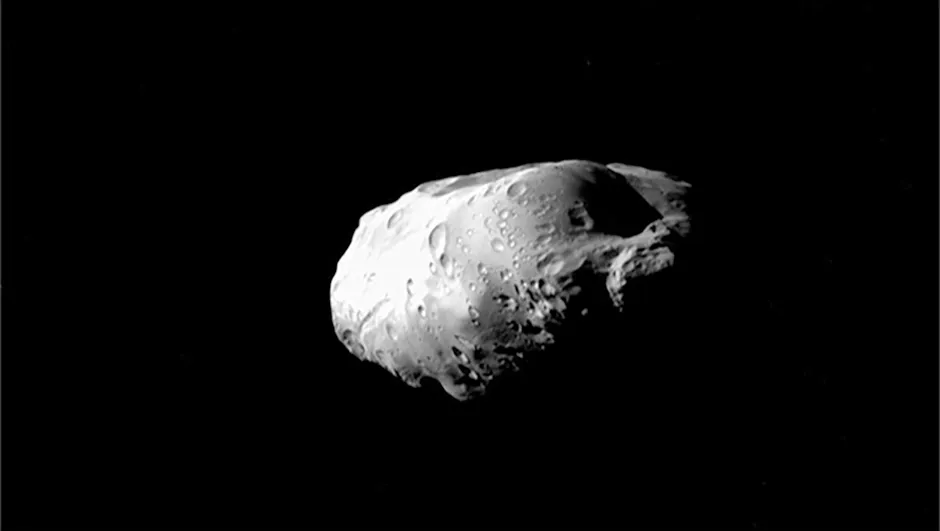Saturn’s inner moons Pan and Atlas have unusual shapes with bulbous centres and thin ridges, leading some to compare them to ravioli or flying saucers.
The question as to how such moons could form captured the attention of astrophysicists at the University of Bern in Switzerland, who have now come up with an explanation.
Pan and Atlas first came to the public’s attention through images captured by the Cassini spacecraft in April 2017.
- Cassini begins Grand Finale
- Moon's hold Saturn's rings in place
- Is friction heating Saturn's icy moon?
These images revealed small moons, just 30km in diameter, with a distinct ‘ravioli’ shape.
Martin Jutzi and Adrien Leleu deduced that these odd shapes could not be the result of simple accretion of material over time, and decided to use computer simulations to explore the possibility that they formed from smaller moons colliding.
Saturn has 95 per cent more mass than Earth, yet its inner moons orbit at a distance of less than half that between Earth and the Moon.

The tidal forces at play around Saturn are so strong they can rip bodies apart, ruling out the formation of Pan and Atlas through accretion.
Turning to a ‘pyramidal regime’ of collisions between smaller moons as an explanation, Jutzi and Leleu used computer simulations to show how these processes could produce exactly the shapes seen in the Cassini images.
Near head-on mergers of moons create flattened objects with large equatorial ridges, just like Pan and Atlas.
Slightly more oblique angles of collision resulted in the elongated shapes of the moon Prometheus, a 90km long body also imaged by Cassini.
"If the impact angle is bigger than ten degrees, the resulting shapes are not stable anymore," says Adrien Leleu.
"That is why Saturn’s small moons look very different to comets that often have bilobed shapes," explains Martin Jutzi.
What’s more, the small inner moons are thought to originate from a thin disc in Saturn’s equatorial plane.
Since Saturn isn’t a perfect sphere, this makes it difficult for any object to leave the plane, so near head-on collisions are not uncommon.
"Saturn is almost a toy system to study these processes," says Martin Rubin, co-author of the study.
